- Why Life Insurance is Important?
- Comparing Benefits
- Choosing the Right Plan

Himanshu is a content marketer with 2 years of experience in the life insurance sector. His motto is to make life insurance topics simple and easy to understand yet one level deeper for our readers.
Reviewed By:

Raj Kumar has more than a decade of experience in driving product knowledge and sales in the health insurance sector. His data-focused approach towards business planning, manpower management, and strategic decision-making has elevated insurance awareness within and beyond our organisation.
Updated on Jul 09, 2025 4 min read
Understanding Term Insurance Plans and Life Insurance Plans
Unexpected events in life can leave a person in shambles (physically, mentally, and financially). Because of it, insurance has become a need of the hour, especially, when a person has family responsibilities and his absence can be a cause for concern.
Every aspect of a person's life and financial capacity calls for a particular kind of insurance coverage. For instance, it's a good idea to buy life insurance that provides maturity benefits and offers financial security for your family, however, when it comes to term insurance it offers only a death benefit in the event of your untimely death. To understand their differences, let's have a glance at what they are.
What is a Term Insurance Plan?
Term insurance is a type of life insurance policy, where a specific benefit is paid if the insured passes away during the policy term. In case the insured survives the policy term, no maturity benefit will be paid. The policy doesn't have any savings component and its premium is based on the insured's age, health, and sum assured.
Based on the type of benefits that they provide, term plans are classified into the following types:
Level term plans TROP (Return of Premium) Plan Increasing term plan Decreasing term plan Convertible term plan Term plans with riders
What is a Life Insurance Plan?
life insurance is a type of insurance policy that provides death benefits along with maturity benefits. The premium paid under this insurance is used for two purposes- savings and life coverage.
Based on the benefits provided, life insurance plans are classified into the following types:
Whole life insurance Money-back policyEndowment plan Child planUnit linked insurance planPension plan Investment plan
Term Vs Life Insurance Comparison Table
| Point of Difference | Term Insurance | Life Insurance |
| Premium | Very low | Higher than term insurance |
| Death Benefit | Payable (no maturity benefits) | Payable (with maturity benefit too) |
| Maturity Benefit | Not payable | Payable |
| Coverage Amount | Higher coverage | Lower coverage |
| Paid-up/Surrender value | No paid-up or surrender value accumulated | Plan acquires a paid-up and surrender value |
| Flexibility | Not Flexible | Flexible |
| Maximum Term | 67 Years (18 to 85 Years Coverage Duration) | 71 Years(18 to 99 Years Coverage Duration |
Difference Between Term Insurance and Life Insurance
Many people get confused between the features of both these plans and are unable to match the suitability of the plan(s) with their circumstances. Let us compare term insurance with life insurance to know the salient features of both types of policies.
-
Death Benefits
Term insurance policies provide a death benefit if the individual dies within the policy term. No maturity benefit is provided under the same. The policyholder has the option to receive paid premiums if he goes with a TROP plan. However, in life insurance policies, if the insured dies during the policy period, his family will be provided the death benefit and bonus (if any). And if the insured survives the policy term, he can avail of the maturity benefit.
-
Coverage vs Saving
In terms of risk coverage, term insurance plans provide death cover. If the insured passes away, his family will get the sum assured. Since term plans only provide death coverage and no maturity benefits, the premiums are lower and the coverage is higher. Individuals who are concerned only about death coverage can purchase this policy. On the other hand, if an individual wants to build an investment along with death cover, then he can go for life insurance policies, which invest a portion of the premium into investment and the remaining portion into death coverage.
-
Flexibility
A term insurance policy is much more flexible in terms of surrendering than life insurance policies. To surrender a term insurance policy, the insured just needs to stop paying the premium, and then his policy coverage and benefits assured under the policy terminate. However, with life insurance policies, if an individual surrenders his policy before the completion of the policy term, then he will be able to recover only the paid-up value. Another point of being flexible is renewability. Term insurance plans can be easily renewed and can be converted to any other endowment by paying the necessary premiums.
-
Surrender Value
Term insurance policies do not have a surrender value, and when the policy expires and is not renewed, there is no benefit provided to the individual. Hence, no portion of the premium is paid back, and the coverage stops. However, if the insured requires the payback of paid premiums, he can opt for a return of the premium term plan. For life insurance, even if the premium payment is discontinued and the policy is voluntarily terminated before its maturity, the insured will be paid a surrender value (based on the number of premiums paid).
-
Loan
An insured cannot avail of a loan under his term insurance policy. This limitation is because term plans do not accumulate any cash value and generally expire the end of the term. However, you can avail of a loan against your life insurance policy. The insurance company issues the loan based on the cash value of the policy as the collateral for the loan. However, an individual may have to wait for 3 years for his life insurance policy to accumulate a cash value, and the terms and conditions will spell out this clause separately.
-
Premium Amount
The premium amount differs greatly in terms of term insurance and life insurance policies. In term insurance plans, the entire premium amount is allocated for providing a life cover, while in life insurance, a part of the premium is allocated to life cover, and another is invested. As term insurance only provides a death benefit, the premiums are very low and provide higher cover. At the same time, life insurance policies also provide a maturity benefit and have higher premiums. Many life insurance policies also provide low returns.
-
Tax Benefits
Premiums paid under both policies are allowed as deductions under Section 80C of the Income Tax Act, 1961. Also, the death benefit is tax-free under Section 10 (10D).
Which One To Choose First?
Mr. Sam is a 32-year old IT professional who does well in his field of expertise. He is earning well and is investing his money prudently (considering his future needs). He also has a happy family with a housewife, and one daughter, and is responsible for taking care of his elderly parents as well, who are fighting illnesses.
Knowing his future needs and uncertainties of life, he chooses a life insurance policy (endowment) with a cover of Rs.15,00,000 and a yearly premium of Rs.45,596. His policy term is 30 years. He is assured that he has a plan that would protect him and his family from any future exigency. However, a slight change of thought is needed here.
Considering the number of risks that surround our environment, Sam should find answers to a few questions-
- If he dies tomorrow, will the policy cover his family's financial needs?
- Will 15 lakhs cover his daughter's future education expenses?
- Is the death benefit of the policy enough to meet his parents' medical expenses?
Today, education expenses are reaching new heights. An MBA course from a top B school cost Rs.25 lakhs. This will only increase in the next 10-15 years. The same goes for medical expenses as well. In 2021, a gall bladder surgery can cost you lakhs of rupees, putting a dent in your wallet. Who knows what the future treatment costs have for us. Therefore, it's fair to have a policy with enough sum assured, which protects you and your family for the next 30-40 years to come.
Another possibility would be purchasing a mix of whole life policy with a term rider. The whole life policy would keep his cash value accumulated, which will help him use the money during the policy term, and the term rider will help him with added benefits like life illness benefits, accident benefits, etc.
Conclusion
In conclusion, term insurance and life insurance serve different financial purposes. Term insurance provides cost-effective protection in case of the insured's death, whole life insurance combines insurance with savings and investment components, offering both death and maturity benefits. The choice should align with an individual's specific financial goals and circumstances.
Term Insurance Vs Life Insurance : FAQs
1. Do life insurance plans allow an individual to build a corpus for children& 039;s future?
Yes, people can purchase child plans within a whole life insurance policy to build a corpus for their children& 039;s needs.
2. If I take a loan on my life insurance policy, will this impact my future premiums?
No. Any loan that you take will not have any impact on your future premiums. However, the amount of the loan will be deducted from your sum assured.
3. I am planning to purchase a mix of term insurance and a money-back life insurance policy. Will I get the death benefit under both plans?
Yes, a death benefit is provided under both plans.
4. Is there a benefit of bonus under term and life insurance policies?
There is no bonus provided under term insurance plans. However, in endowment, money back, or child plans, you are entitled to bonuses and other specific bonuses.
5. What is the difference between term and life insurance?
Term insurance policies only provide a death benefit on the death of the policyholder and pay a sum assured to the beneficiary. Life insurance policies provide a maturity value, surrender benefits, and come with various income and investment benefits.
6. On comparing term plan vs life insurance, which offers the highest age eligibility?
Generally, insurers do not offer term insurance above the age of 65, but life insurance offers coverage with no upper age limit.
7. In comparison to term insurance vs life insurance which has a larger premium?
One of the main differences between term and life insurance is the premium amount. The policyholder has to pay a lower premium for the term insurance as compared to life insurance.
Life Insurance Companies
Share your Valuable Feedback
4.6
Rated by 864 customers
Was the Information Helpful?
Select Your Rating
We would like to hear from you
Let us know about your experience or any feedback that might help us serve you better in future.


Written By: Himanshu Kumar
Himanshu is a seasoned content writer specializing in keeping readers engaged with the insurance industry, term and life insurance developments, etc. With an experience of 2 years in insurance and HR tech, Himanshu simplifies the insurance information and it is completely visible in his content pieces. He believes in making the content understandable to any common man.





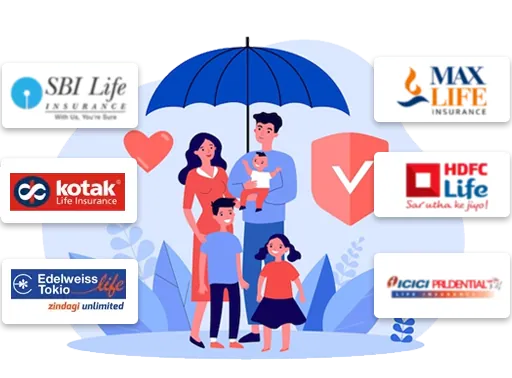
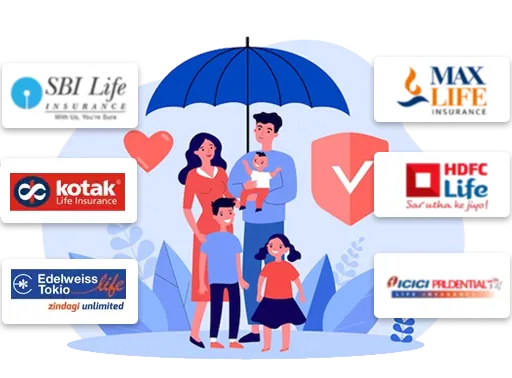
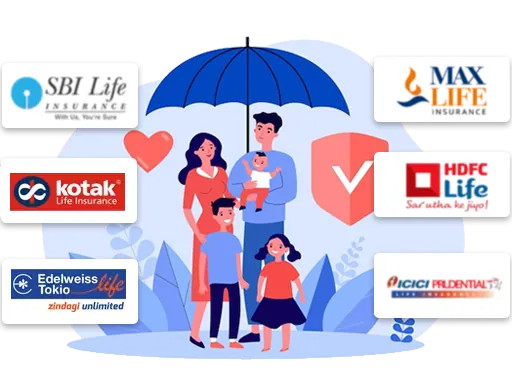



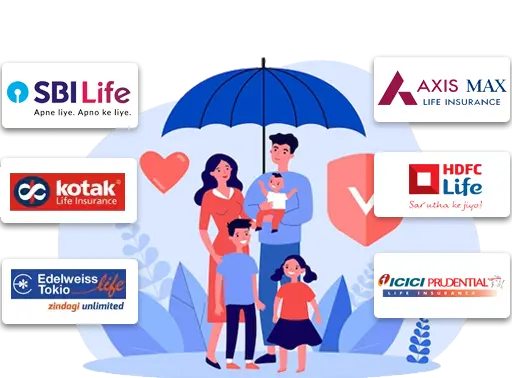
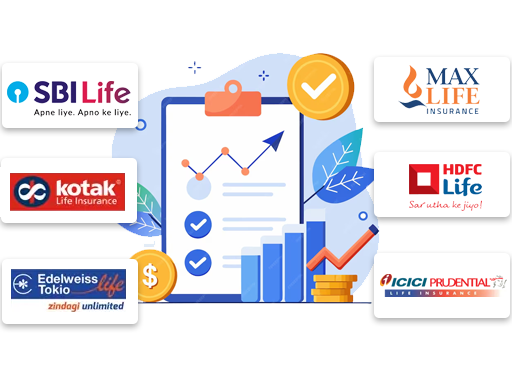
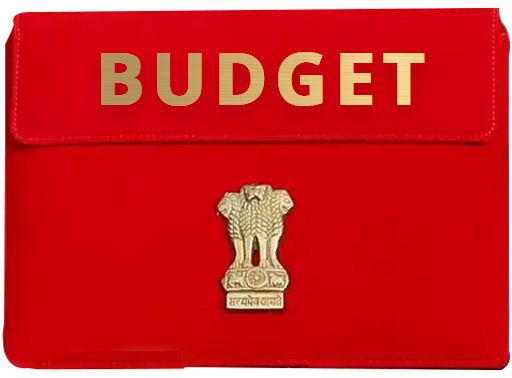
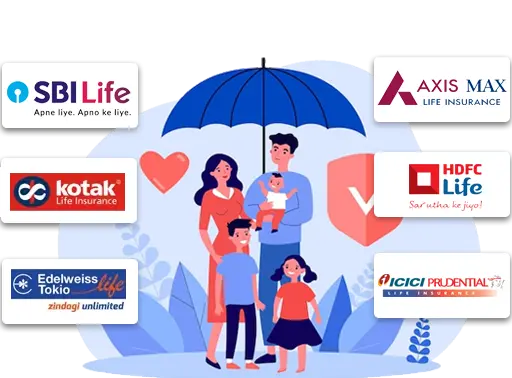
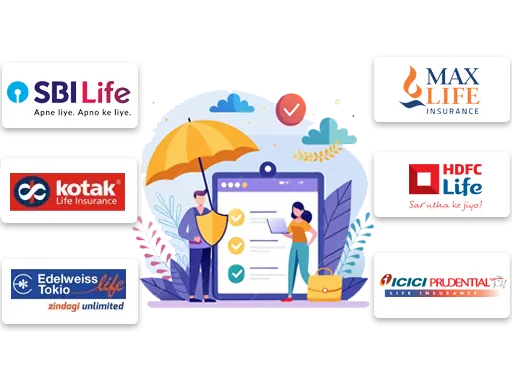






Do you have any thoughts you’d like to share?